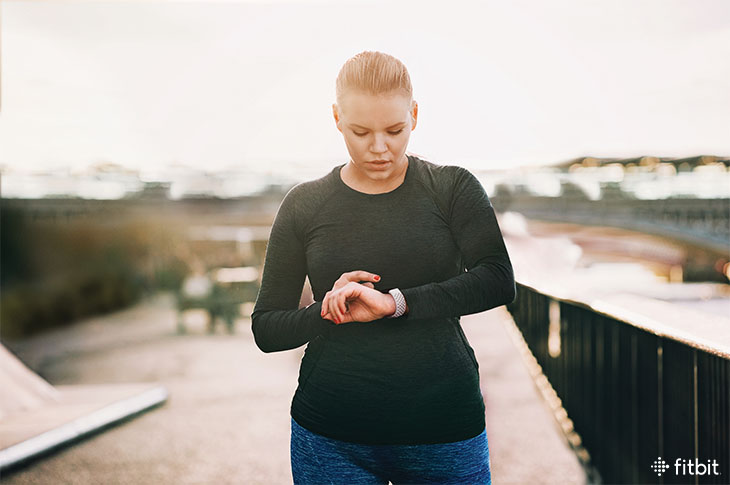
Every health journey is unique and has its own set of challenges. When it comes to weight loss, that’s just as accurate—weight management is, after all, a deeply personal journey.
As you build momentum along the way you will ultimately find yourself wanting to see the progress you make. That is where tracking comes in. While tracking weight using the scale method is both common and useful, there are alternatives for those who would like to try something new. It’s not just about a number on the scale, it’s about how you feel—especially when it comes to self-esteem and self-confidence.
Additionally, researchers continue to examine the accuracy of body weight as the only criteria to define an individual’s health status. With this in mind, how does someone track progress? Most people like to know that the work they are putting into healthy habits will have a positive outcome. So where else can you see it, if not on the scale?
The key to any successful wellness journey is to keep finding changes that work for you. There are more ways than one to stay energized about your process while keeping up with the strides accomplished along the way.
Here are some alternative strategies for tracking your weight loss.
Your VO2 max. VO2 is a measurement of how well your body can process oxygen. When evaluated, it reflects the maximum amount of oxygen your body can use when you’re working out at your highest capacity. When your body is functioning efficiently, it moves oxygen throughout the body to fuel your daily activities. With this efficient transportation and use of oxygen, you are then characterized as being fitter and better able to perform everyday tasks with ease.
A 2013 study by the National Institute of Health revealed that when a participant has a high aerobic fitness it is related to having a lower heart rate while walking and biking. High aerobic fitness also correlates with greater participation in physical activities, which results in less weight regain.
When the measure of VO2 max showed a significant increase, the participant’s ability to engage in physical activity improved. So did their ability to do more activities and expend more energy, leading to more calories burned. VO2 max can be used to measure your ability to do more physical activity and to show progress towards doing physical activity with more efficiency.
Physical performance. Physical activity can be a key contributor to your weight management. Although weight loss is characterized by the loss of fat, looking at physical performance overall is a great strategy for tracking progress without using a scale. But how? Take a look at your cardio fitness score! Your cardio fitness score reflects your estimated VO2 Max—in fact it uses your VO2 Max to help measure your physical fitness improvement— and is calculated using your resting heart rate and user profile.
As you focus on exploring ways to increase your exercise performance, you will increase your exercise intensity as well as exercise duration. When you focus on your cardio fitness score, you are working to improve your ability to do more physical activity, and at a higher level.
Another way to track your physical performance for weight management is to increase your Active Zone Minutes. Pursuing AZMs supports your efforts to increase your exercise intensity and put forth more effort to get your heart pumping. An increase in AZMs reflects an increase in your physical activity. Tracking them will offer insight into the methods of exercise that offer the greatest impact to your workouts. AZMs also give you the opportunity to add variety to your routine while improving your fitness level and burning more calories toward weight loss.
Using tracking methods such as your cardio fitness score and your Active Zone Minutes, gives you the opportunity to celebrate the small victories along the way. With this approach, you are choosing to focus on the impact of your physical activity efforts while also tracking your aerobic progress.
Nutrition. Eating is our fuel and foundation as human beings. It is also one of the most unique and important aspects of any health journey. Over the years many have been exposed to different healthy eating strategies and guidelines. As more information is uncovered about the human body and what makes it thrive, the guidelines continue to evolve. With this new information, many people have begun to develop a new relationship with food on the road to health and weight management.
Taking the time to investigate what is in your food can increase your awareness and support more mindful decision making. Mindful eating is a strategy that opens the way for simple changes to your everyday eating habits. When mindful eating is employed, healthy eating to lose weight can be as simple as swapping ingredients in some of your favorite foods.
Additionally, an intuitive eating program can have many benefits for improving your relationship with food in a way that is both healthy and sustainable.
Are you someone who wants to experiment with alternative options to tracking your progress with a scale?
While it can be an essential tool for seeing changes in your body, give yourself permission to activate your creativity and explore a few new ideas for marking moments of personal success, while empowering your self-esteem and confidence at the same time.
This information is for educational purposes only and is not intended as a substitute for medical diagnosis or treatment. You should not use this information to diagnose or treat a health problem or condition. Always check with your doctor before changing your diet, altering your sleep habits, taking supplements, or starting a new fitness routine.

If you have questions about a Fitbit tracker, product availability, or the status of your order, contact our Support Team or search the Fitbit Community for answers.
Please note: Comments are moderated and may not appear immediately after submission.